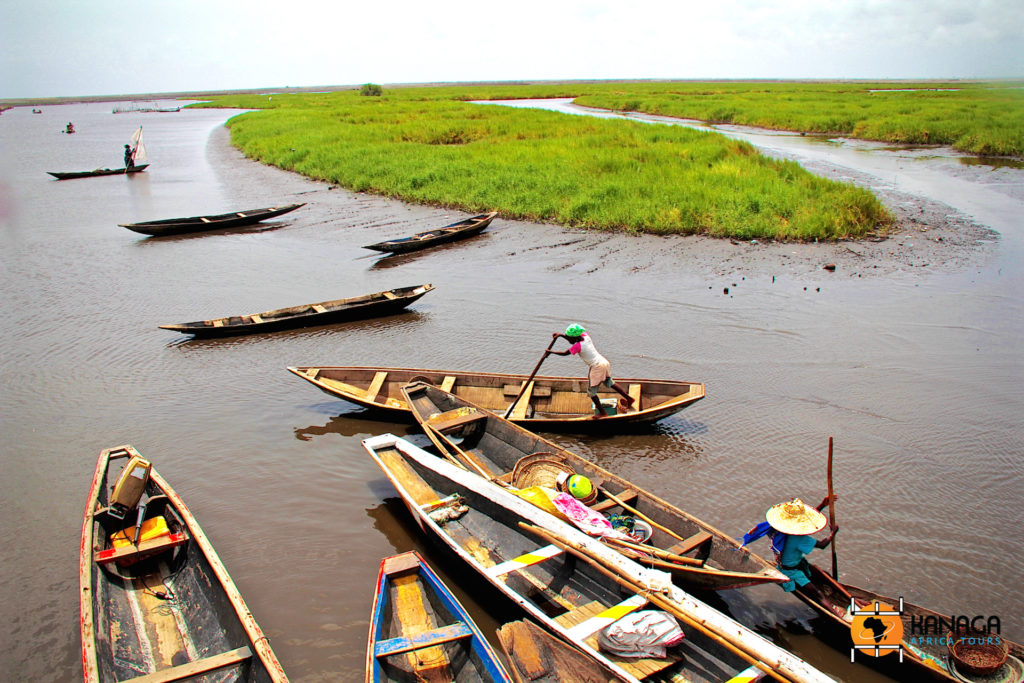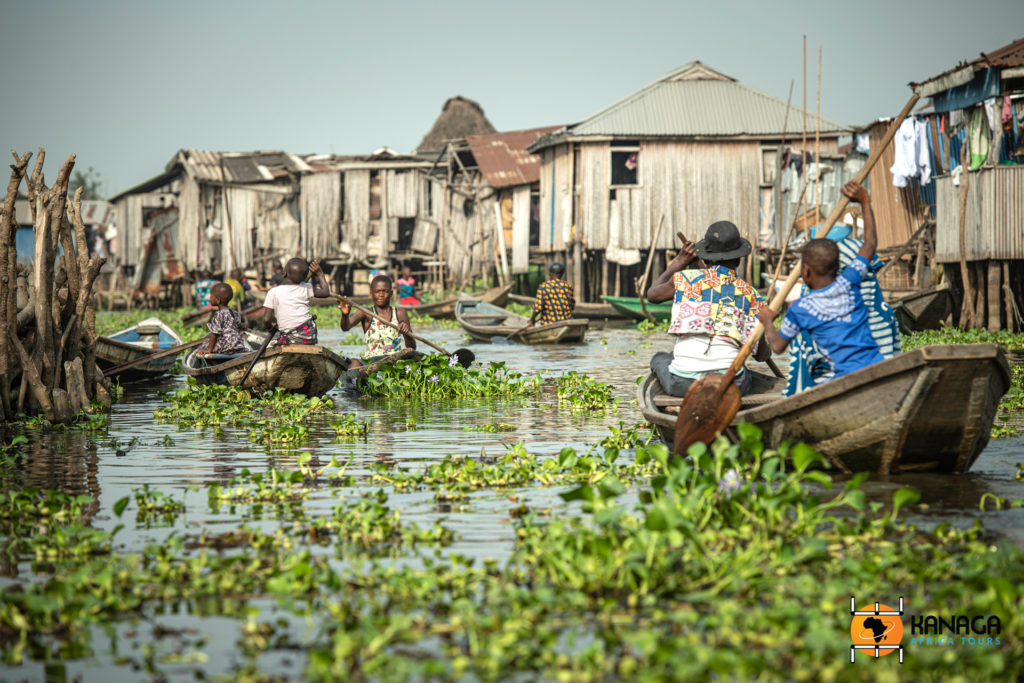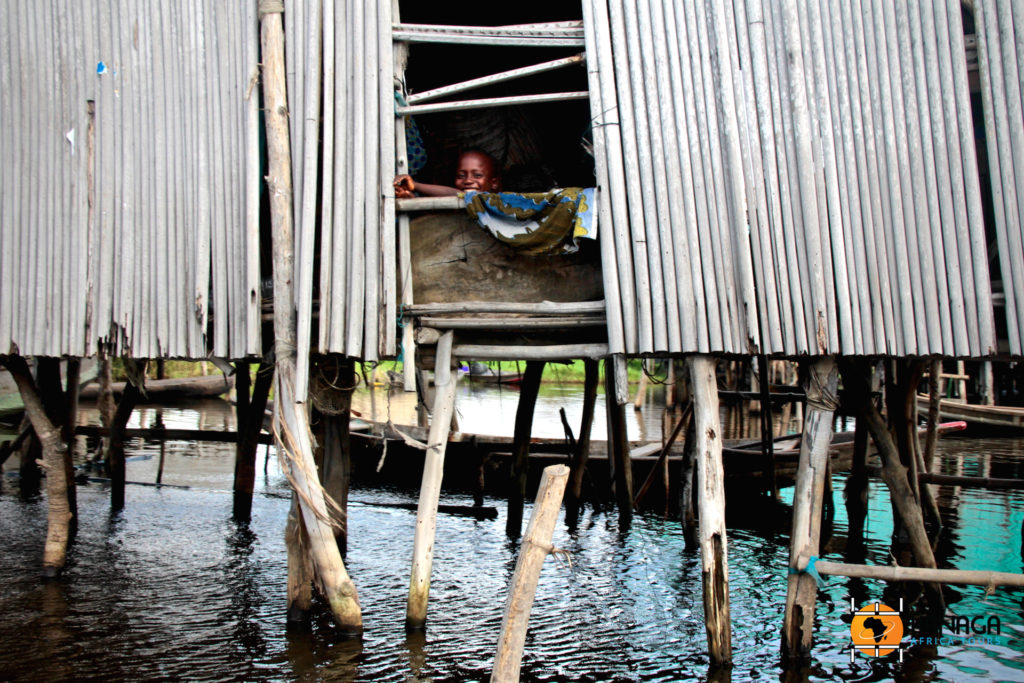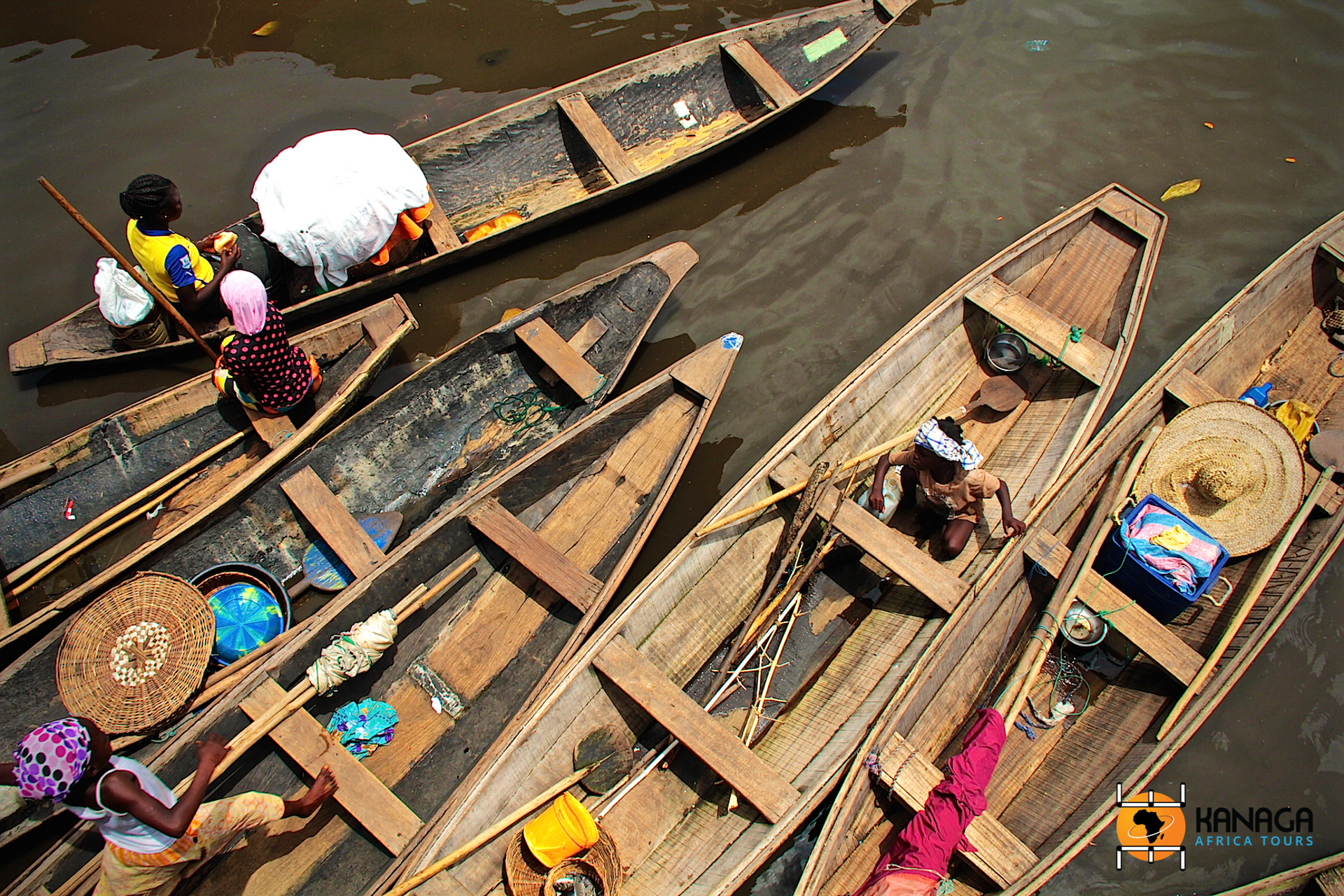© I. Fornasiero
Ganvié is a town near Cotonou, famous for its bamboo and wooden huts built on stilts around the perimeter of Lake Nokoué and inhabited by some 30,000 Tofinu people.
The Tofinu took refuge in this marshy area in the 17th century to escape the slave hunters of Dahomey, who were not allowed to go near the water because of a religious ban.
A people of fishermen, they have adopted a very special technique for creating artificial fish farms, which consists of planting branches on the muddy bottom of the lake, the leaves of which, once decomposed, become excellent bait that attracts fish. Another characteristic of these incredible people is their typical bamboo dwellings, built on ebony stilts, which have to be renovated every twenty years.
Arriving at Ganvié by small boat from the port of Calavi is like witnessing a breathtaking spectacle, in a crescendo of visual and chromatic emotions, unique in the world.
The emerald green of the aquatic plants contrasts with the blinding silver of the water and the straw yellow of the branches surrounding the traditional fish farms. Small motor boats, rowing boats and sailing boats pass each other in an incessant coming and going. The cheerful pastel colours of the stilts, the fishermen casting their nets “on the fly”, the children on their improvised little rafts pushing on poles, the chanting voices of the women at the floating market, everything in Ganvié immerses you in an atmosphere that is out of time and out of place.
The Venice of West Africa is certainly one of the most fascinating places in the whole of West Africa.







